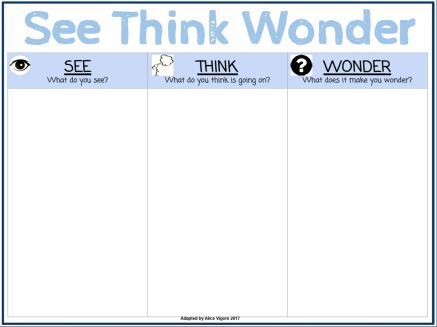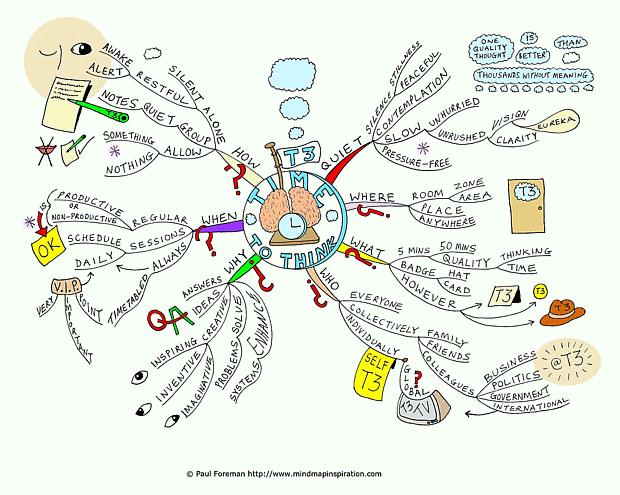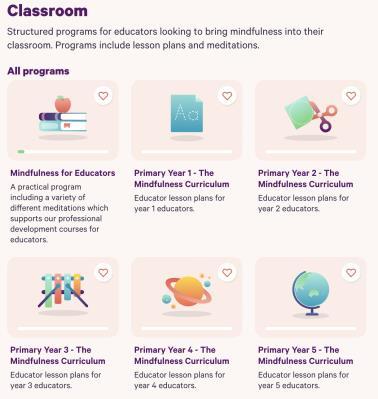

New Beginnings - Ready to Learn in 2023
At the beginning of each year all classes are involved in the ‘New Beginnings - Ready to Learn in 2023’ program. The program this year has an emphasis on the ‘Berry Street Education Model’ (BSEM). This is an important opportunity for students and teachers to develop positive relationships and to create cultures of learning which are outcome based, all of which support high quality learning. Classes will use this time to establish clear expectations around learning, develop routines and procedures and focus on social skill development. Educational research indicates that student learning is enhanced when expectations are high, and the learning environment is positive, safe, supportive and engaging. The New Beginnings week will support student success, foster a love of learning and develop a positive and healthy mindset within students as they begin the new school year.
The ‘CESA Key Capabilities Continua’ is a tool used at our school to support children and young people to reflect on, provide evidence, plan for and grow their capabilities in partnership with educators and their families. Recognising and developing their key capabilities will help young people be comfortable and confident in who they are and give them the tools to thrive throughout their lives, from the early years, through schooling, and beyond. The CESA Key Capabilities Continua aligns well with the Key Capabilities from the Australian Curriculum. The New Beginnings week is a great way to help our students develop their Personal and Social Capabilities. From Reception to Year 6, students are expected to develop skills in ‘Self-awareness, Self-management, Social awareness and Social management’ through a range of learning experiences.
The focus of the New Beginnings week will be on ‘Domain 1: Body’ (from the Berry Street Education Model book), which prioritises the body and the impacts of chronic stress on the body and its regulatory abilities. Another resource being used in the New Beginnings week will be ‘The Mind Up Curriculum’, which shares information about the brain and offers lessons and strategies for helping students focus their attention, improve their self-regulation skills, build resilience to stress, and develop a positive mind-set in both school and life.
Activities in the New Beginnings week will:
• Follow the four focus areas in this domain: ‘De-escalation, Present, Centred Ready to Learn, Mindfulness and Self-Regulation’
• Establish a positive and supportive classroom learning culture
• Determine a clear purpose for student learning
• Establish classroom rules and agreements
• Develop and foster a growth mindset in student thinking
• Participate in getting to know you activities e.g. What makes me who I am?
• Develop positive relationships with peers and teachers
• Highlight our behaviour guidelines.
8:40 – 8:50
Morning routine
(Prayer, Greeting, Values, Expectations, Announcements, Positive Primer, WWW)
Establishing classroom routines (including Prayer Table/Space, Calming Corner)
School Motto & Values (Love in Everything, Community, Creativity, Curiosity, Excellence)
E.g., How can we show Love in Everything at school? What do these values mean and what does it look like in our school?
Morning routine
(Prayer, Greeting, Values, Expectations, Announcements, Positive Primer, WWW)
Growth vs Fixed Mindset activities
*Refer to ‘Possible Ideas’ section of the document or ‘The Mind Up Curriculum’ book for activities.
Morning routine (Prayer, Greeting, Values, Expectations, Announcements, Positive Primer, WWW)
Ready to Learn Plans
(pg. 24-27 of Domain 1 – Body)
Morning routine (Prayer, Greeting, Values, Expectations, Announcements, Positive Primer, WWW)
Percussion Games
(pg. 80 of Domain 1 – Body)
Morning routine (Prayer, Greeting, Values, Expectations, Announcements, Positive Primer, WWW)
11:20
Mindfulness Brain Break:
Kindness Meditation (pg. 57 of Domain 1 - Body)
Personal Inquiry
E.g., What makes me who I am?
*Refer to inquiry questions in this document for ideas
If using ‘The Mind Up Curriculum’, you may include…
- How Our Brain Works pg. 26
- Sharpening Your Senses pg. 50
- Perspective Taking pg. 102
- Choosing Optimism pg. 110
- Expressing Gratitude pg. 128
Getting Present, Centred and Ready to Learn (pg. 37-38 of Domain 1 – Body)
Emotional and feeling literacy (pg. 79 of Domain 1 – Body)
Introduction to Mindfulness
*Using BSEM, Smiling Mind or other websites. (pg. 54 of Domain 1 – Body)
Breathing Activity: Learning to Breath (pg. 39) and Conscious Breathing (pg. 56 of Domain 1 - Body)
Class Agreement/Inquiry
E.g., How can we build a great community in this classroom?
*Refer to inquiry questions in this document
Stress – What is stress?
Identifying stress responses and recognising individual stress responses. (pg. 15-20 of Domain 1 – Body)
RECESS (11-11:20)
Noticing Activity Brain Break: (pg. 41) and Mindful Walking (pg. 63 of Domain 1 - Body)
Developing self-regulating tools (Ready to Learn Scale) (pg. 75-78 of Domain 1 – Body)
Brain Break (choose an activity from Staff Handbook): Extension ideas pg. 46 – 50)
Growth vs Fixed Mindset activities (continued)
Growth vs Fixed Mindset activities (continued)
Year Level Activity
Centring games (pg. 45 of Domain 1 – Body)
LUNCH (JP 12:40-1:30, PRIMARY 1:30-2:10)
Gratitude journaling (pg. 60 of Domain 5 – Character)
Centring the body in balance (pg. 49-50 of Domain 1 – Body)
END OF DAY (3:00PM)
In-class ball games (pg. 83 of Domain 1 – Body)
Morning Music
Warm
Up (pg. 82 of Domain 1 – Body) Goal
setting for the year
E.g., I will……..by…(date)….I will reach my goal by…..
Brain Break (choose an activity from Staff Handbook): Extension ideas pg. 46 – 50)
Class Agreement/Inquiry (continued)
Buddy Class Activity
Role modelling gratitude (pg. 60 of Domain 5 – Character)
POSSIBLE IDEAS:
Personal & Class Inquiry
How students and the class learn
Creating an inquiry into ourselves - Possible questions to prompt/incorporate in our New Beginnings week:
How can we build a great community in this classroom?
What do we need we find out about each other? How could we go about this?
What do we need to know about each other in order to start to build a great community?
How might we design this learning space to help us do the best learning possible?
What do you need/want to know about me as your teacher?
What would you love to learn about/learn to do this year? How might we make that happen?
What should I (as your teacher) learn about you?
What are you wondering about yourself as a learner this year?
What are you most curious about when you think about the year ahead?
Personal Inquiry:
What makes me who I am?
What helps me stay more focussed on a task?
How can I become more of a risk taker?
What happens if I reduce my screen time?
How can I become a more organised learner?
*Rather than over-planning the ‘what’ and the ‘how’ of this, try inviting the students to design questions and investigations.
CESA Key Capabilities

Inquiring into how students learn and how they perceive themselves as a learner
• Use and teach specific language to accompany the CESA Key Capabilities –“When students label the more specific processes they are using as learners, they develop a greater understanding of the nuanced differences between the skills and strategies required to achieve a task” (Murdoch, 2017)
FOCUS: Self-aware, Collaborative and Socially adept

• Explicitly teach and unpack these skills e.g., through modelling, role plays, providing weak and strong models, research experts, run clinics (have other students run these clinics), video students and then have them analyse this
• Use this for goal setting and assessment
• Create a display in your classroom of the assets e.g. What they look like, sounds like, use images, photos, research experts in the area.
Creating a sense of Community
“Getting to know each other”
Ideas include: Identity Map

-Students put their name (or self portrait) in the centre of an A3 sheet – then branch off things they care about (family, favourites, important memories, topics they may be experts on, beliefs, culture).


Partner Venn Diagrams:
-Students work on their own side of the diagram filling in attributes of their identity

-Compare with another student
-Have students identify similarities in the middle
-Invite students to talk about other possible similarities (eye colour, hair colour)
-Can display these and have students identify all similarities they have with one another.
Language Fair:
-To celebrate diversity in our classrooms, have students present ‘words or phrases of the day’ in their language.

• How can our students learn best in the classroom this year?
• What tools or resources will they need to succeed?
• How can we work with students to create an agreement about the kinds of learners they all strive to be?



• How can we make an agreement about the learning, not just about behaviour?
• Have students signed the agreement, do they see you as a learner too?

Smiling Mind Link to Website:
https://www.smilingmind.com.au/mindfulness
Books/Resources
Children’s literature include:
• Your Fantastic Elastic Brain
• The Girl Who Never Made Mistakes
• Not Yet
• The Most Magnificent Thing
• Bubble Gum Brain
• Thanks for the Feedback
• The Dot
• Beautiful Oops
• What Do You Do With A Problem
• What Do You Do With An Idea
• How to Catch a Star
• Little by Little
• Rosie Revere Engineer
• I wonder
• Ish
Teaching resources include:
• Berry Street Education Model books (Domains 1-5)

• Berry Street Education Model Staff Handbook

• The Mind Up Curriculum (Pre-K-2, 3-5, 6-8)





• Brain Breaks 1 & 2 books

Growth Mindset
Activities
Activities:
The Girl Who Never Made Mistakes (book):
https://cdn.sourcebooks.com/assets/downloads/libraryresources/GirlWhoNeverMadeMistakes-EduGuide.pdf
Your Fantastic Elastic Brain (read aloud book)
https://www.youtube.com/watch?time_continue=1&v=8QSPfnQCIY0&feature=emb_logo
A Beautiful Oops (activity):
Do some ‘messy art’ (click attached link) like splatter paint, sloppy paint-stamping or even scribbles on a page, and turn it sideways or upside-down to see what it could be. Maybe the ink spot looks like a turtle on the beach, or that drip of paint is beautiful rain falling. Or randomly tear up pieces of paper and see what shapes they are to turn them into something else.
More suggestions: https://homegrownfriends.com/home/beautiful-oops-inspired-activities/ https://imaginationsoup.net/beautiful-oops-moments-barney-saltzberg/
• Video (You Can Learn
Anything)
https://www.youtube.com/watch?time_continue=28&v=JC82Il2cjqA&feature=emb_logo
• ‘Your Fantastic Elastic Brain’ activities (see below for ideas)
https://cdn.sourcebooks.com/assets/downloads/libraryresources/YourFantasticElasticBrain-EduGuide.pdf
• Activity: Imagine if… (can sketch for younger year levels)
- Imagine if your cerebellum, the part of your brain that directs muscles to move and balance, stopped working, what are 3 things you would miss doing?
- Imagine if you were a member of the planning committee for the end of school year party. Activating your prefrontal cortex, how would you plan the celebration?
- Imagine if you were alone at night walking through a dark alleyway and you heard footsteps running behind you. What signal, message, and/or emotion would your amygdala likely send to you? What would you do? Write and draw your response.
- Imagine if you were outside this building right now, activating your hippocampus and remembering the surroundings, what are 3 things you would see?
- Imagine if you did your best in school, practiced challenging skills often, learned from your mistakes, and had a growth mindset that kept you motivated to continue trying and learning, what career would you want to be successful in when you grow up?
DISCUSSIONS (after engaging in the book, ‘Your Fantastic Elastic Brain’):
- Brainstorm attributes and uses of elastic bands. Why does JoAnn Deak (author) compare the brain to an elastic band? Compare and contrast: How are a brain and an elastic band the same? How are they different? Create a Venn Diagram (or ask pairs of students to fill one in at their desks) as a visual for students to see the similarities and differences.
- Deepen their understanding of fixed mindset. Given that the information contained in this book describes a growth mindset approach, what could the attributes of a fixed mindset be? Do you know anyone (in literature or real life) that displays the characteristics associated with a fixed mindset?
- Discuss each part of the brain and its function. How does knowing about the function of the brain change the way you make decisions or choices in your life? Does your understanding of the brain affect your courage to try something new? Why or why not? How might your outlook change when you are faced with a challenge that feels impossible?
- Ask students to create personal affirmations. Affirmations are related to a growth mindset and will help students when they are faced with a challenge. Affirmations should be written in first person point of view (perfect opportunity for a language arts connection and review).
Mindfulness in the classroom Ideas

include:
- Mandalas
- Origami
- Controlled breathing
- Guided meditation
- Mindful taste, touch, movement
- Yoga, Tai Chi
- Feather blowing - Bubble blowing
- Relaxation music with guided breathing
- Hand drumming
- Pinwheel blowing - Mirroring
*For more information and resources on ‘New Beginnings’ and ‘Growth Mindset’, please explore the ‘Staff Intranet’ page and school ‘S Drive’ .
